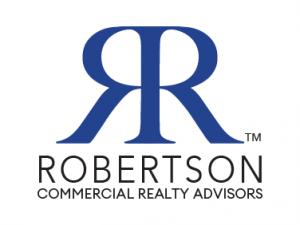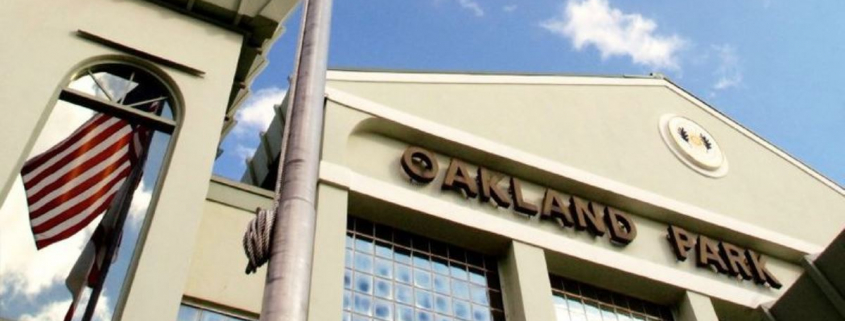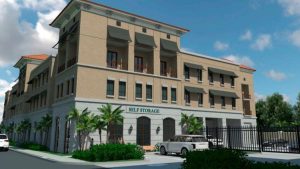The next boomtown in South Florida has been right under our noses all this time, and we didn’t see it.
The little city that could turns out to be, of all places, Oakland Park, smack in the middle of Broward County. You’ve driven by it, or through it, a thousand times and you never gave it a second thought.
As Sun Sentinel reporter Phillip Valys lays out in great detail in a must-read story, Oakland Park is hitting its stride and is building itself an impressive skyline.
A signature destination is Oaklyn, an 11-story mixed-use tower at 3333 N. Federal Highway, where the website apartments.com says the rent for a one-bedroom studio apartment is $1,934 a month and ranges upward to $3,770.
It’s a sure sign of progress for a town that not so long ago was little more than some warehouses, a strip club or two, the circular KenAnn building and the Peter Pan Diner.
Oakland Park Boulevard? Sure, that’s a major east-west corridor. But Oakland Park, the place? Forget it.
If you’re like most people, you probably thought it was part of Fort Lauderdale. It isn’t. Tucked in alongside U.S. 1, it’s one of Broward’s oldest cities, chartered in 1929 from the remains of the boom-and-bust town of Floranada. In this prime location, with its huge traffic counts, the Sun Sentinel article describes an emerging nightlife in Oakland Park.
After many years of working in, living in and writing about Broward, Steve Bousque, the Opinion Editor of the Sun Sentinel and a columnist in Tallahassee and Fort Lauderdale, decided a long time ago that a place so small and densely populated didn’t need so many bland cities. The county has 31 cities and towns packed into a populated area of about 400 square miles, barely one-fourth the size of Rhode Island, which is completely nuts.
To appreciate how far Oakland Park has come, take a brief trip along Old Dixie Highway back to the earlier, 1980’s version. You won’t be disappointed. If you think the political extremism of today is out of control, you’d be right. But for the sake of sanity, if nothing else, it’s worth remembering that we’ve had to endure these antics before. During the 1980s, Oakland Park became a political laughingstock after a far-right cabal of three commissioners took control of City Hall.
They drove away a competent city manager, John Stunson. They gave a key to the city to Phyllis Schlafly, an anti-ERA crusader. The ceremonial mayor at the time, Mary Laveratt, an anti-abortion activist, sued her city, claiming her colleagues illegally restricted her power. Commissioners refused to let Laveratt order the city clerk to issue a “Sanctity of Life Day” resolution.
Worst of all, Oakland Park passed a resolution urging everybody in town to go out and buy a gun. The media had a field day. It was Oakland Park’s overreaction to an ordinance by a liberal Broward County Commission that required gun buyers to get permits.
In the news media’s annual spoof of Broward politics that year, the Yellow Feather Awards (for “yellow journalism”), we could not resist skewering Oakland Park’s pro-gun resolution in song, with a takeoff on the folk classic “This Land is Your Land.” It went like this:
This gun is my gun, this gun ain’t your gun. I got a handgun, and you ain’t got one The NRA says it’s okay To whip it out and blow you away.
The political craziness in Oakland Park did not last very long. After a couple of election cycles, voters restored some sanity to Dixie Highway.
The Oakland Park of today, high-rises and all, is a far better place than it was in 1983. It’s even getting a motorcycle-themed coffeehouse.
Back then, the town had a seediness that you just don’t see today. A strip club called the Backstage Lounge served fruit juice to customers after the city banned sales of alcohol at nude dancing clubs. It took three decades for Oakland Park to put two strip clubs out of business.
Every community should know, honor and remember its history as it really was, and Oakland Park does well at that too. On the city’s website are priceless black and white photos from its early years and asks residents to share their personal stories for the city’s upcoming centennial six years from now, in 2029. The little city is on the move.
Source: SunSentinel




